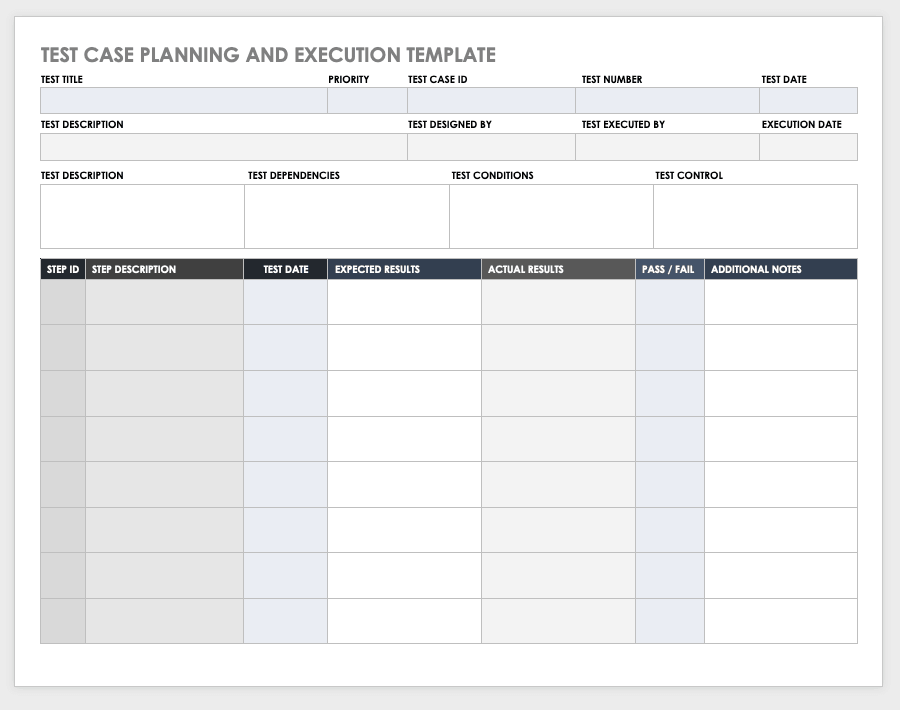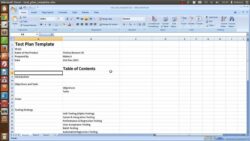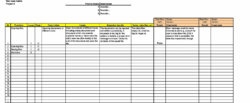Let’s face it, software testing isn’t always the most glamorous part of the development process. But it’s arguably one of the most critical. After all, what good is a brilliant piece of software if it’s riddled with bugs and errors? That’s where solid documentation comes in. And no, we’re not talking about endless, dry manuals that no one ever reads. We’re talking about streamlined, effective documentation that helps your team deliver high-quality software, consistently.

Think of it this way: imagine building a house without blueprints. Chaos, right? Software testing without proper documentation is pretty much the same thing. It’s like wandering in the dark, hoping you stumble upon all the potential issues. A well-defined software test documentation template provides that blueprint, guiding testers and developers alike through the process and ensuring nothing gets missed.
So, where do you start? How do you create a template that’s actually useful, not just a box to tick? This article dives into the world of software test documentation templates, exploring what makes them effective, the key components you should include, and how they can revolutionize your testing workflow. Get ready to ditch the guesswork and embrace a more organized, efficient approach to software quality.
Why a Software Test Documentation Template is Your Secret Weapon
Let’s be honest, creating documentation from scratch every single time you start a new project is a massive time sink. It’s also a recipe for inconsistency. One tester might document things one way, while another uses a completely different approach. This lack of standardization can lead to confusion, miscommunication, and ultimately, lower quality software. A software test documentation template solves this problem by providing a consistent framework for all your testing efforts.
But the benefits go far beyond just saving time. A well-designed template ensures that all the essential elements of your testing process are covered. It prompts testers to consider key aspects like test objectives, scope, test cases, expected results, and pass/fail criteria. This comprehensive approach helps to identify potential issues early on, reducing the risk of costly bugs slipping through to production. Think of it as a safety net, catching errors before they become major headaches.
Furthermore, good documentation is invaluable for collaboration. It allows developers, testers, and other stakeholders to easily understand the testing process, the results, and any issues that have been identified. This transparency fosters better communication and collaboration, leading to faster resolution times and improved overall product quality. No more endless email chains trying to decipher what went wrong – the information is all there, clearly documented.
Beyond the immediate benefits, a software test documentation template also serves as a valuable historical record. It provides a detailed account of your testing efforts over time, allowing you to track progress, identify trends, and learn from past mistakes. This historical data can be used to improve your testing processes and make more informed decisions about future projects. It’s like having a built-in knowledge base that grows with each project.
In short, a software test documentation template isn’t just a nice-to-have – it’s a must-have for any organization serious about delivering high-quality software. It saves time, ensures consistency, facilitates collaboration, and provides valuable insights into your testing processes. It’s a small investment that can pay off big time in terms of improved quality, reduced costs, and happier customers.
Key Elements of a Winning Software Test Documentation Template
Now that you understand the importance of a software test documentation template, let’s dive into the key elements that make it effective. The specific elements you include will vary depending on the nature of your project and your organization’s specific needs, but there are some common components that are essential for most templates.
First and foremost, you need a clear and concise overview of the test objectives. What are you trying to achieve with this testing effort? What specific functionalities or features are you focusing on? A well-defined objective helps to focus the testing effort and ensure that you’re testing the right things.
Next, you’ll need a detailed scope definition. What’s included in the scope of the testing, and what’s excluded? This is crucial for managing expectations and preventing scope creep. Clearly defining the scope helps to ensure that everyone is on the same page and that the testing effort is focused on the most important areas.
The heart of your template should be the test cases. Each test case should clearly outline the steps required to perform the test, the expected results, and the pass/fail criteria. The more detailed and specific your test cases are, the easier it will be for testers to execute them consistently and accurately. Consider using a table format to organize your test cases, with columns for test ID, description, steps, expected results, and actual results.
Finally, make sure to include sections for documenting any defects or issues that are identified during testing. This should include details about the nature of the defect, its severity, and the steps required to reproduce it. This information is invaluable for developers when they’re trying to fix the issues.
Remember to tailor your template to your specific needs. Don’t be afraid to experiment and adjust the elements as needed to create a template that works best for your team. The goal is to create a template that’s both comprehensive and easy to use, making the testing process more efficient and effective.
Good software testing is an investment, not an expense. Embrace documentation. Your future self will thank you for laying the groundwork.
By taking the time to implement a robust software test documentation template, you’re not just improving the quality of your software – you’re also improving the efficiency of your team and setting yourself up for long-term success.



